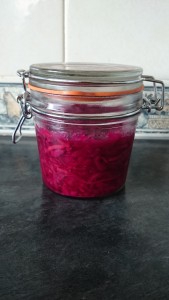When I was in the first stages of my PVF/ME/CFS I can remember having an internet discussion with another sufferer about recovery. Neither of us knew how far we would recover or how long it would take, but we both desperately wanted to believe it was possible. I remember thinking that any improvement in my health would improve my quality of life, and I have experienced that all the way through my recovery.
When I was reliably able to pick my kids up from school on my electric bike it was great. When I was able to shower regularly it was fantastic. When I could cook meals for my family it was marvellous. When I started this blog it was wonderful, when I was able to walk to the end of my road it was amazing. When I was able to go to go on a cycle ride with my family it was fabulous.
Last summer I made some huge improvements, and anyone looking at me would not have known I had ME/CFS. However, I still felt it was there, lurking. I still had to be careful about my activity levels, plan activities, say no to a few things and disappear for rests. This was still the case at Christmas, when I wrote that I was prioritising activities and had declined some invitations.
However, since early in the new year I feel something has shifted. Now I feel fully recovered. I don’t feel I have to work around my illness. I don’t think about it. I just get on with doing what I want to do, when I want to do it.
I do still take care of myself. The last 3 years have taught me that’s important. I’m still doing my Miracle Morning, and I still sometimes rest during the day if I have a busy evening ahead, but that’s because it’s sensible, not because I can’t cope with the evening without resting in the day.
This week is half term and I’ve been having fun with my family. First was a busy weekend with my siblings and their families, then a day at the Tower of London (lots of standing and walking). In the lovely February sunshine I’ve done some gardening and played basketball with my son. Two friends saw me on the basketball court in our village and they looked surprised, but I knew I could run around with my son, come home and carry on with the rest of my day. No PEM, just a few aches from playing basketball for the first time in years!
So for me that’s what recovery looks like. It’s feeling healthy again, and just getting on with life. It didn’t happen overnight, in fact it snuck up me so gradually that I can’t tell you exactly when it happened, but I can recognise the difference. I’m recovered. I believe it’s permanent, but only time will tell if I’m right about that.
If you’re in the early stages of the illness, focus on resting and pacing and when you reduce your activity enough you will stabilise, and from there you can improve. If you’re in the later stages of recovery then keep doing what you’re doing, and tweak when necessary until you reach 100% recovered.
Recovery is possible.


